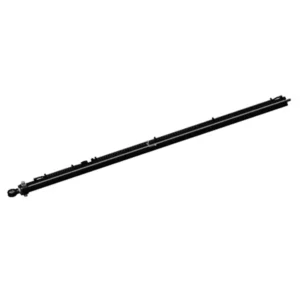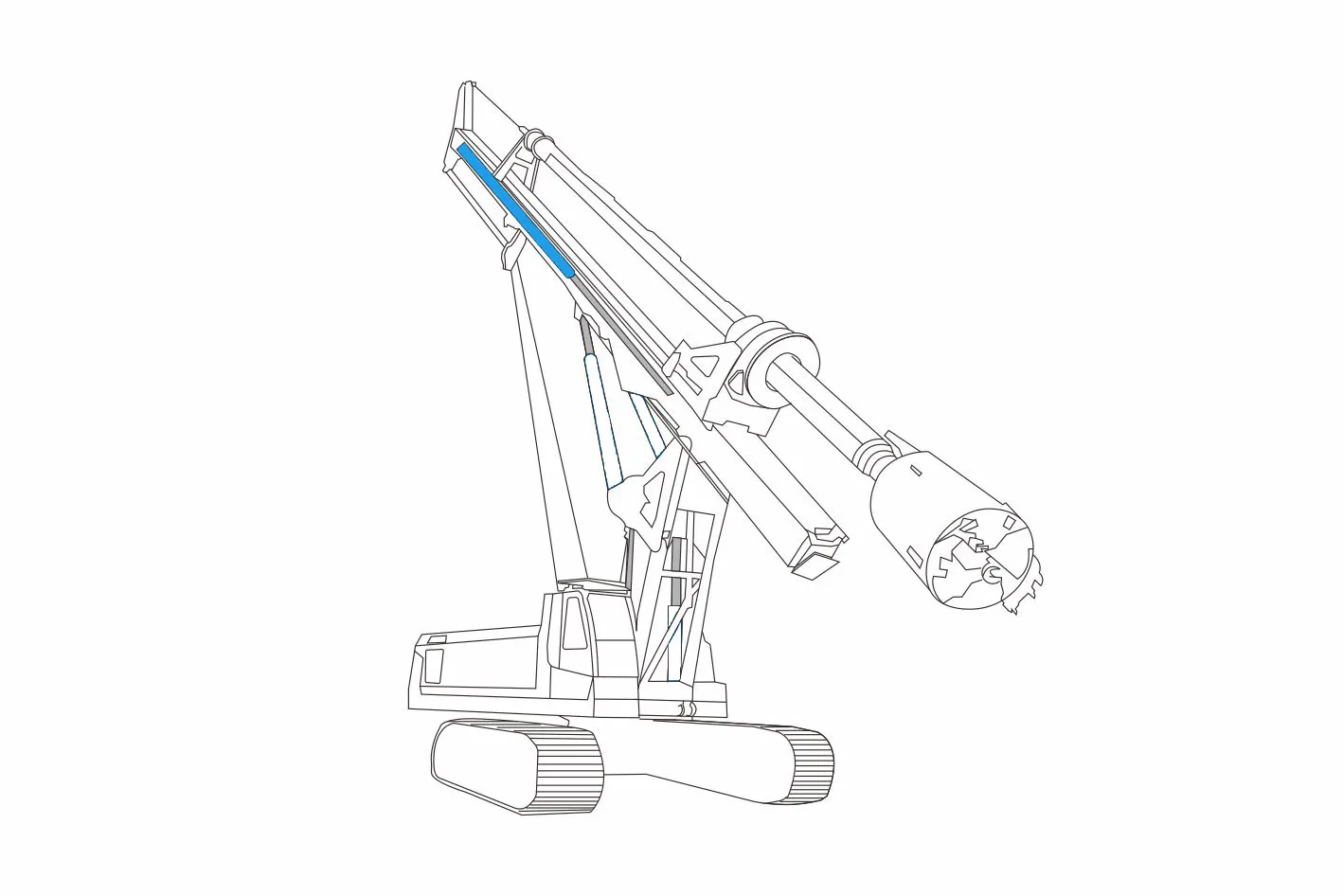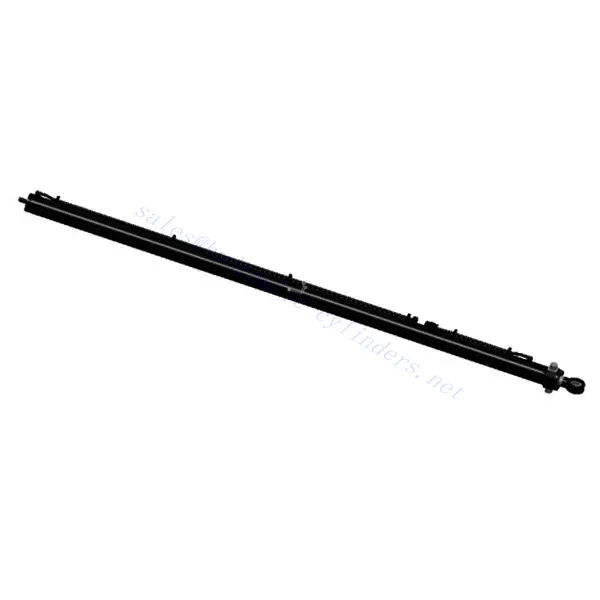Rotary Drilling Pressurized Cylinder
Como cilindros hidráulicos uno de los fabricantes, los surtidores y los exportadores de productos mecánicos, ofrecemos cilindros hidráulicos y muchos otros productos.
Póngase en contacto con nosotros para más información.
Correo:sales@hydraulic-cylinders.net
Fabricante proveedor exportador de cilindros hidráulicos.
Rotary Drilling Pressurized Cylinder

The rotary drilling pressurized cylinder is a high-performance hydraulic component specially designed to enhance efficiency and precision in rotary drilling operations. This cylinder plays a crucial role in controlling the vertical movement of the drilling mast, ensuring accurate positioning and optimized drilling performance.
The rotary drilling pressurized cylinder is indispensable for maximizing efficiency and precision in rotary drilling operations. With its superior construction, precise hydraulic control, adjustable stroke length, and enhanced stability, this cylinder empowers operators to position the drilling mast and optimize drilling performance accurately. By following proper usage methods and adhering to recommended maintenance practices, operators can ensure the longevity and reliability of the Rotary Drilling Pressurized Cylinder, leading to safe and efficient drilling operations. Choose this high-performance hydraulic component to elevate your drilling equipment and achieve exceptional drilling results.
Rotary Drilling Pressurized Cylinder Key Characteristics:
- Superior Construction:
- The rotary drilling pressurized cylinder is constructed with top-quality materials, guaranteeing durability and longevity.
- It is engineered to withstand the demanding conditions encountered in drilling operations, including heavy loads, vibrations, and extreme environments.
- Precise Hydraulic Control:
- This cylinder operates through a hydraulic control system, utilizing pressurized hydraulic fluid to control the vertical movement of the drilling mast.
- The precise hydraulic control ensures accurate and responsive movement, allowing for precise positioning and control during drilling operations.
- Adjustable Stroke Length:
- The rotary drilling pressurized cylinder offers an adjustable stroke length, providing flexibility to accommodate various drilling requirements and ground conditions.
- This adjustability allows operators to achieve optimal drilling performance and adapt to different project specifications.
- Enhanced Stability and Safety:
- The cylinder’s design emphasizes stability and safety during drilling operations.
- It effectively minimizes vibrations and ensures smooth movements, enhancing the overall stability of the drilling mast.
Rotary Drilling Pressurized Cylinder Parameter:
| Product Name | Rotary Drilling Pressurized Cylinder |
| Features: | Control the lifting and lowering of the power head |
| Bore diameter: | 125mm~210mm |
| Rod diameter: | 90mm~150mm Stroke≤8500mm |
| Pressure: | up to 35MPa |
| Pressurized Cylinder Applications: | Rotary Drilling |
Rotary Drilling Pressurized Cylinder Identification Diagram:

Usage Method Of Rotary Drilling Pressurized Cylinder:
- Familiarize with Operational Controls and Safety Guidelines:
- Before operating the rotary drilling equipment, it is crucial to become familiar with the equipment manufacturer’s operational controls and safety guidelines.
- Strictly adhere to all safety procedures and precautions to ensure safe and efficient drilling operations.
- Adjusting the Stroke Length:
- Use the control mechanism, such as a control panel or joystick, to activate the rotary drilling pressurized cylinder.
- Adjust the stroke length according to the specific drilling requirements and ground conditions.
- The cylinder will translate the pressurized hydraulic fluid into the required force for precise positioning of the drilling mast.
- Monitoring and Adjusting Drilling Mast Position:
- Continuously monitor the position of the drilling mast during operation.
- Make necessary adjustments to ensure accurate drilling and maintain the desired drilling height.
What Law Of Hydraulics Does The Brake System Use?
The brake system in vehicles commonly utilizes Pascal’s law of hydraulics. Pascal’s law states that when pressure is applied to a fluid in an enclosed system, the pressure is transmitted equally in all directions. In a vehicle’s brake system, this law allows for the transfer of force from the driver’s foot pressing the brake pedal to the brake calipers at each wheel.
Here’s a simplified explanation of how the brake system uses Pascal’s law:
- Brake Pedal:
When the driver presses the brake pedal, it applies force to a piston in the master cylinder. - Master Cylinder:
The master cylinder contains hydraulic fluid and houses the piston. As the driver pushes the brake pedal, the piston compresses the fluid and increases the pressure. - Hydraulic Lines:
The increased pressure is transmitted through the hydraulic lines, which connect the master cylinder to the brake calipers or wheel cylinders at each wheel. - Brake Calipers/Wheel Cylinders:
The brake calipers (in disc brakes) or wheel cylinders (in drum brakes) contain pistons that are acted upon by the hydraulic pressure. The pressure exerted by the hydraulic fluid causes the pistons to move, applying force to the brake pads or brake shoes. - Brake Pads/Shoes:
The brake pads (in disc brakes) or brake shoes (in drum brakes) are pressed against the rotating brake discs or drums, creating friction. This friction slows down or stops the rotation of the wheels, thereby decelerating the vehicle.
Capacidad de la fábrica:
(1) Montaje
We have a first-class independent research and development assembly platform. The hydraulic cylinder production workshop has four semi-automatic lifting cylinder assembly lines and one automatic tilt cylinder assembly line, with a designed annual production capacity of 1 million pieces. The special cylinder workshop is equipped with various specifications of a semi-automatic cleaning assembly system with a designed annual production capacity of 200,000 and equipped with famous CNC machining equipment, a machining center, a high-precision cylinder processing special equipment, a robot welding machine, an automatic cleaning machine, automatic cylinder assembly machine, and automatic painting production line. Existing critical equipment of more than 300 sets (sets). The optimal allocation and efficient use of equipment resources ensure the accuracy requirements of products and meet the high-quality needs of products.


(2) Mecanizado
El taller de mecanizado está equipado con un centro de torneado de carril inclinado personalizado, un centro de mecanizado, una máquina de bruñido de alta velocidad, un robot de soldadura y otros equipos relacionados, que pueden procesar tubos cilíndricos con un diámetro interior máximo de 400 mm y una longitud máxima de 6 metros.

(3) Soldadura

(4) Pintura y revestimiento
Con pequeñas y medianas líneas de cilindros automáticos de recubrimiento de pintura a base de agua, para lograr la carga y descarga automática de robots y pulverización automática, la capacidad de diseño de 4000 piezas por turno;
También disponemos de una línea semiautomática de producción de pintura para grandes cilindros accionada por cadena, con una capacidad de diseño de 60 cajas por turno.


(5) Pruebas
Disponemos de instalaciones de inspección y bancos de pruebas de primera clase para garantizar que el rendimiento del cilindro cumple los requisitos.

We are one of the best hydraulic cylinder manufacturers. We can offer comprehensive hydraulic cylinders. We also provide corresponding cajas de cambios agrícolas. We have exported our products to clients worldwide and earned a good reputation because of our superior product quality and after-sales service. We welcome customers at home and abroad to contact us to negotiate business, exchange information, and colabore con nosotros!
Visite nuestra fábrica de RV:
Haga un recorrido por nuestra fábrica de RV con lo siguiente
Cilindro hidráulico Aplicación:


